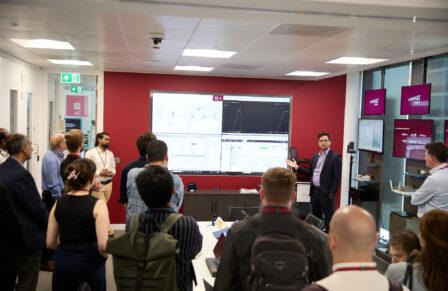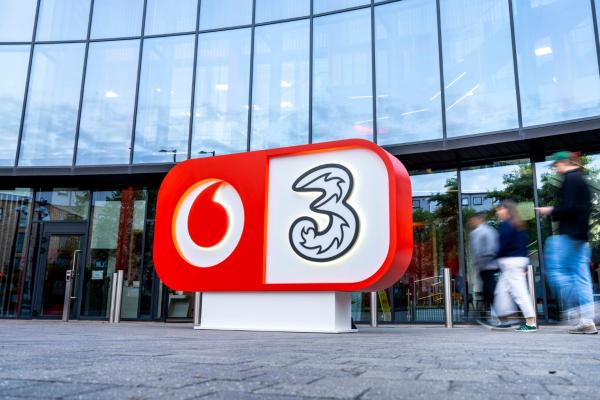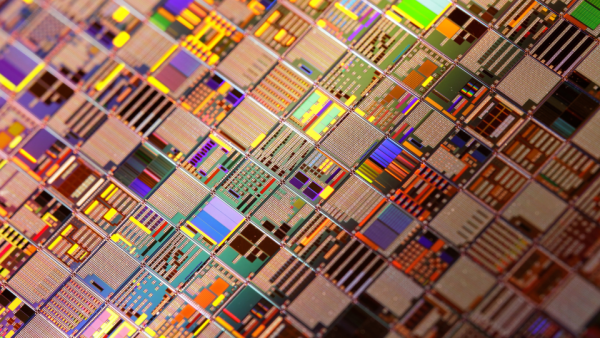UKTIN spoke to Dr Andy G Sellars, Co-Chair of the Semiconductors Expert Working Group and Strategic Development Director at Compound Semiconductor Applications (CSA) Catapult to learn more.
For those who are new to semiconductors, please explain the basics.
Semiconductors are an advanced group of materials, with remarkable properties. At a basic level, semiconductors can operate as insulators such as plastic or conductors such as copper, and can flip from one state to another. This property is incredibly useful as they can be used as switches; for example, semiconductors can switch the current in an electric motor on and off, controlling the direction of an electric vehicle. At a more sophisticated level, billions of semiconductor switches can be fabricated on the same chip to process numbers using complex arithmetic.
Semiconductors are big news at the moment. What has changed?
Semiconductors have always been very research-intensive; their fundamental properties were discovered around 100 years ago by scientists such as JJ Thompson working at Cambridge University. Academics were looking at the difference between insulators and conductors and found that some elements were insulators while others were conductors. A certain group of elements, researchers realised, could change from being an insulator to a conductor and back again if they added very small impurities. This started the research into semiconductors, catalysing innovation.
The first commercial semiconductors were introduced around the 1950s, and one of the first applications was replacing electric switches in telecom networks. Now found in almost every aspect of our lives, semiconductors have become far more complex: a mobile phone contains about $350 worth of semiconductors.
Although the fundamental theory hasn’t changed, the prevalence of semiconductor technology in our daily lives has become increasingly apparent. During the pandemic, some semiconductors used in vehicles became scarce, preventing vehicle manufacturers from supplying new cars. This shortage highlighted the importance of semiconductors in everyday products.
What is the UK’s position in the semiconductor market?
In May 2023, the Department for Science Innovation and Technology (DSIT) published the UK National Semiconductor Strategy. It recognised three UK strengths: R&D, design and intellectual property, and compound semiconductors. The UK is very strong in R&D with three UK universities consistently ranked in the global top ten. We are also very highly rated in design, probably the second to the US, although other countries are starting to catch up. In the case of compound semiconductors, the UK has strengths in design and manufacturing, which complement other countries specialising in silicon semiconductors, such as Taiwan. Although the UK is a relatively small country, we have great ambitions to build on our strengths.
- Please tell us about CSA Catapult.
CSA Catapult was established by Innovate UK in 2018 as a not-for-profit research and technology organisation. We initially established an Innovation Centre in Newport, South Wales, and have since opened our Future Telecoms Hubin Bristol, as well as offices in the North East and Scotland.
As the UK’s authority on compound semiconductor applications and commercialisation, we work with start-ups, SMEs, large organisations and academia to de-risk commercialisation, eliminate barriers to market and accelerate compound semiconductor technologies. Since 2018, we have won over £18m worth of collaborative R&D projects and have had more than 200 collaborations with industry. Net Zero is one of our priority areas and we work extensively on vehicle electrification.y For example, we joined a £20m collaboration with McLaren Applied and other partners to develop the power train for an electric sports car, using UK semiconductors. We are also collaborating with a consortium called @FutureBEV including BMW on a similar £30 million project. This project aims to develop a UK supply chain that can support the transition of BMW to SiC-based power electronics in its future generations of BEV (Battery Electric Vehicle). Our other priority area is Futures Telecoms. We have recently finished a project called Secure 5G, which used compound semiconductors to create a highly efficient 5G base station with cloud-based quantum encryption.
How important is the work of UKTIN for opening up the semiconductor sub-sector to the broader telecoms ecosystem?
UKTIN has played an important role within the telecom ecosystem. While semiconductors are used in many applications, telecoms is often at the cutting edge of innovation. The UKTIN Semiconductor Expert Working Group has analysed where UK semiconductor strengths lie, and what role the UK can play in the next generation of telecom networks.
The Semiconductor Expert Working Group is one of eight Expert Working Groups run by UKTIN. The Expert Working Groups frequently compare notes, looking to break down organisational silos, to maximise our impact. This was evident at the recent Mobile World Congress, where UKTIN showcased UK expertise in next-generation telecom technologies.









